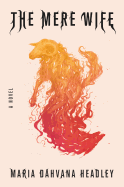
| Publisher: | MCD/Farrar, Straus & Giroux | |
| Genre: | Women, Dystopian, Fantasy, Contemporary, Literary, Fiction | |
| ISBN: | 9780374208431 | |
| Pub Date: | July 2018 | |
| Price: | $27 |
| Starred | Fiction |
by Maria Dahvana Headley
Maria Dahvana Headley combines the myths and monsters of Beowulf with the horrors of modern suburbia in The Mere Wife, a stunning and complex novel of love, motherhood, greed, ambition and isolation.
Dana Mills, veteran of an unnamed war, is believed dead after a video of her beheading was released to the media. In reality, she is alive and raising her son, Gren, in an abandoned railroad tunnel carved into a mountain near her hometown. At the base of that mountain, Willa Herot lives in a glass house with her perfect husband and their perfect son, Dylan. When Gren and Dylan become friends, The Mere Wife sets off on a path of calamity: men die, women close ranks, monsters are hunted.
Those familiar with Beowulf will appreciate the cleverness of Headley's ambitious retelling, but The Mere Wife is impressive even when considered apart from the epic. Headley moves expertly between perspectives, with first-person narratives intersected by a chorus of voices from the suburban women who will do anything to protect their own.
"Maybe this has always been a job that women do.... Raising them and protecting them, trying to get them out into the future still living, still loving, trying to defend them from all the... broken world wants." Headley brings that broken world to life with dazzling prose, writing with urgency about love and protection and all of the terrible things people do to one another in the name of both--an urgency as timeless as the classic upon which the novel is based. --Kerry McHugh, blogger at Entomology of a Bookworm
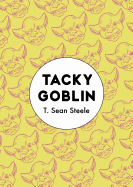
| Publisher: | Unnamed Press | |
| Genre: | Humorous, Magical Realism, Family Life, Fantasy, Contemporary, General, Satire, Literary, Coming of Age, Fiction | |
| ISBN: | 9781944700607 | |
| Pub Date: | July 2018 | |
| Price: | $14.99 |
| Fiction |
by T. Sean Steele
Delaying adulthood has never been so fun, or so anarchic, as it is in Tacky Goblin by T. Sean Steele. This novella in diary form is as pointed as a knife and as surreal as an Escher print.
The narrator, a fictional T. Sean, lived at his parent's house until recently. When a mold stain in his bedroom ceiling starts giving him mixed messages, he moves to Los Angeles to stay with his sister Kim. She gives him a human skull as a welcome gift ("Look, it's a gift! Take it or don't.") and sets about to counter his almost pathological resistance to activity. He's sure that his legs are atrophying, though, even though they look normal, so how can he look for a job? He knows that he should explore his new city, too, but the pills that his kind-of girlfriend, Laurie, gives him make his "brain feel carbonated." He winds up staying inside for days, fishing teeth out of the drains and training their new dog that looks and acts suspiciously like a human baby.
T. Sean's journal jumps and loops within time and space, and life doesn't so much happen to him as it happens around him. "The facts existed, or they didn't, whether or not I paid attention to them." His observations on life, and the rules of adulthood, are morbidly funny and ring with an oddball truth that fans of Welcome to Night Vale and Alice Isn't Dead will relish. --Cindy Pauldine, bookseller, the river's end bookstore, Oswego, N.Y.

| Publisher: | Tim Duggan Books | |
| Genre: | Psychological, Cultural Heritage, Literary, Fiction | |
| ISBN: | 9780525573630 | |
| Pub Date: | July 2018 | |
| Price: | $25 |
| Fiction |
by Katharine Kilalea
Like Eliot's Prufrock or Beckett's Molloy, the narrator of Katharine Kilalea's first novel, OK, Mr. Field, is an introspective middle-aged man bewildered and saddened by what his life has become. The eponymous Mr. Field lives on a hillside above a seasonal beach retreat for the Cape Town wealthy. His house is a knock-off of the famous Le Corbusier work, Villa Savoye, where he wanders glassed halls and rugged grounds musing on his career as a pianist--cut short by a disabling train accident--and pondering why his wife has left him. He skims newspapers, half-heartedly works crossword puzzles, obsesses over the widow who sold him the house and occasionally walks to town, comparing the busy tics and tacs of "normal" people to his own ennui. A contemporary existentialist, Mr. Field has lost his way--and maybe lost his mind.
South African-born and now living in London, Kilalea is a poet (One Eye'd Leigh) and former publicist for an architectural firm. With a flair for language and metaphor, the concise, wry and contemplative OK, Mr. Field is also rich in the arcana of architecture. Le Corbusier's stark minimalism appropriately mirrors the malaise of Mr. Field's life. Alone as he is, however, Mr. Field still longs to connect--if only with the stray dog he takes in. If a sadness permeates this book, it is the restless melancholy of one who sees his torpor and strives to overcome it. With subdued resolution, he notes: "The important thing, I decided, was to stay vertical." Beckett would approve. --Bruce Jacobs, founding partner, Watermark Books & Cafe, Wichita, Kan.
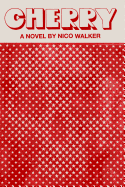
| Publisher: | Knopf | |
| Genre: | War & Military, Crime, Literary, Fiction | |
| ISBN: | 9780525520139 | |
| Pub Date: | August 2018 | |
| Price: | $26.95 |
| Mystery & Thriller |
by Nico Walker
Even without Nico Walker's unusual biography, his debut novel, Cherry, would be impressive. But the fact that it was produced by an Iraq War combat veteran and drug addict while serving time for bank robbery in federal prison unquestionably adds to its power. Walker is a talented writer whose depiction of how it feels for a soldier to return from a war his country would like to forget, only to join a growing army of addicts in a crisis that country can't solve, is as timely as it is terrifying.
There's nothing heroic or noble about the unnamed narrator's military service in Iraq in 2005-2006. A medic, he's sent on endless patrols that mostly involve kicking down doors on the chance he'll find bad actors behind them, all the while hoping to avoid random, instantaneous death at the hands of an improvised explosive device.
But as much as Cherry is a story about war and its consequences, it's also a love story, if a sadly perverted one. The narrator and his wife (and ex-wife), Emily, can't live together or apart. The scenes of their mutual self-destruction and the desperate search for money to buy more drugs (that eventually leads to bank robbery in order to avoid the agony of withdrawal) are nightmarish. To the obvious question why anyone would want to live this way, Walker helps us understand that, for these two characters, there's no choice.
Laced with dark, ironic humor, Cherry remains a bleak and uncompromising book. Considering its subject matter, any other stance would represent a failure of imagination, if not artistic dishonesty. When Nico Walker leaves prison, he'll face a world changed in countless ways from the one he left. The fact that it hasn't in others is part of the tragedy of this deeply disquieting novel. --Harvey Freedenberg, freelance reviewer

| Publisher: | Metropolitan | |
| Genre: | Biography & Autobiography, Biography & Memoir, Nonfiction, General, Cultural, Ethnic & Regional, Comics & Graphic Novels | |
| ISBN: | 9781627793537 | |
| Pub Date: | August 2018 | |
| Price: | $27 |
| Graphic Books |
by Riad Sattouf
The first two books by French cartoonist and former Charlie Hebdo contributor Riad Sattouf introduced readers to family life in a repressive authoritarian regime through the wide-eyed innocence of a child. The third Arab of the Future volume opens with the continuing indoctrination of a now seven-year-old Riad.
In learning to conform and survive, Riad has emerged as meaner and increasingly desensitized to the everyday trials of his village existence. A manipulative streak has replaced his naïveté, and he begins to emulate the behaviors of the boys and men around him. Meanwhile, Clementine, Riad's disillusioned French mother, withdraws into a world of jigsaw puzzles. She is angry about their inferior living conditions and demands that Abdel, Riad's father, move to the city for its modern comforts. Abdel stalls as he wrestles with the conflicting divide between family traditions and his Western education, professing dedication to his conservative Islamic roots while simultaneously mocking its old-fashioned ways. And young Riad is caught between his father's stubborn dogmatism and his mother's growing intolerance of those views.
Sattouf draws with an appealing, simple style that heightens the conflicts between Eastern and Western influences, and magnifies the cruelties and violence that Sattouf witnesses. The maturing Riad begins to see cracks in his parent's marriage and observes the corrupting influence that Syrian politics has on his doting but morally challenged father. Abdel fails to bully his wife into the submissive obedience expected in his cultural circle, and he resorts to groveling and lying instead to earn that elusive respect. Riad will learn what it means to be a man in turbulent 1980s Syria, even if achieving that manhood threatens to betray his own beliefs and values. --Nancy Powell, freelance writer and technical consultant
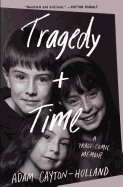
| Publisher: | Touchstone | |
| Genre: | Biography & Autobiography, Marriage & Family, Personal Memoirs, General, Entertainment & Performing Arts, Topic, Humor | |
| ISBN: | 9781501170164 | |
| Pub Date: | August 2018 | |
| Price: | $26 |
| Biography & Memoir |
by Adam Cayton-Holland
Comedian Adam Cayton-Holland's wry, candid and heartrending memoir, Tragedy Plus Time, chronicles his younger sister's suicide and the shattering effects on him and his family. Raised in a loving home by a lawyer father and investigative journalist mother, Cayton-Holland and his two sisters learned early about injustices in the world. In an attempt to keep their own Colorado world safe, all three children started exhibiting secret obsessive compulsive tendencies with rituals they had to perform to prevent the world from falling apart. As they grew up, Adam funneled his anxieties into stand-up comedy and his older sister, Anna, became a lawyer. His younger sister, Lydia, worked in the family's law office and for Adam.
As Adam's career began to take off as both a stand-up comic and member of the comedy troupe The Grawlix, Lydia began spiraling into mental breakdowns, drug overdoses and psych ward evaluations. Her mental illness became an exhausting routine of rescues and relapses for her family. And then she abruptly killed herself. Her death happened just 10 days before Adam's TV pilot won financing. In his haze of grief, he had to start working on the project, which turned into the sitcom Those Who Can't on TruTV.
Like Tig Notaro (I'm Just a Person) and Patricia Williams (Rabbit), Cayton-Holland is a comedian who has written a harrowing memoir with virtually no laughs. This brave and uncompromising exploration of mental illness and a family working their way out of grief is a helpful and inspiring story. --Kevin Howell, independent reviewer and marketing consultant
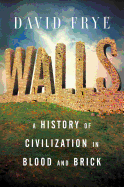
| Publisher: | Scribner | |
| Genre: | Civilization, Architecture, Social History, General, History, World | |
| ISBN: | 9781501172700 | |
| Pub Date: | August 2018 | |
| Price: | $28 |
| History |
by David Frye
In 1987, Ronald Reagan stood before the Berlin Wall, a symbol of the Cold War, and told Mikhail Gorbachev to "tear down this wall." Two years later, Berliners took to the streets and began disassembling the wall, paving the way for the reunification of Germany and the collapse of Communism in Eastern Europe. Fast forward 30 years, Donald Trump speaks of the "big, beautiful wall" he wants built to separate the United States from Mexico ostensibly to curb illegal immigration, as similar structures also begin to emerge in Europe and elsewhere to turn away migrants.
In Walls, historian David Frye tells the story of civilization through man-made barriers. Spanning thousands of years of history, Frye considers the ancient world of "wallers and warriors." Defensive walls were built along the vast expanse of the Eurasian Steppe to keep Mongols and other barbarians at bay. In ancient Greece, Athenians built a wall around their city while Spartans eschewed them; the fortifications allowed mathematics, philosophy and the hallmarks of civilization to emerge in Athens, but also created a false sense of security, for the walls were penetrable. Frye travels through the "Great Age of Walls" when the Great Wall of China and Hadrian's Wall were built. The names of the barbarians changed, the building materials became stronger, but the story is often the same--walls were constructed to keep invaders out, while those behind them grew complacent and were unprepared when they were breached.
Tyrannical leaders and fearless aggressors have tussled throughout history, and countless men and women died building structures that were designed to protect them. Frye's history of the construction and subsequent destruction of walls is a colorful crash course in world history. --Frank Brasile, librarian
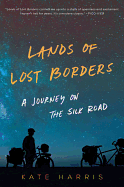
| Publisher: | Dey Street | |
| Genre: | Biography & Autobiography, Travel, Asia, Literary Figures, Bicycling, Transportation, Personal Memoirs, Bicycles, Adventurers & Explorers, Central, Special Interest | |
| ISBN: | 9780062839343 | |
| Pub Date: | August 2018 | |
| Price: | $24.99 |
| Starred | Travel Literature |
by Kate Harris
Since childhood, Kate Harris has wanted to be an explorer. Reading Marco Polo's account of his journey on the fabled Silk Road, Harris was determined to make her own way there. But, like the Venetian explorer, her travels took a winding course. In Lands of Lost Borders, her luminous, incisive memoir, Harris chronicles her permanent wanderlust, her twisting career path and the months she spent cycling the Silk Road with her best friend.
Harris's journey took her first to Oxford as a Rhodes scholar, then to the laboratories of MIT, where she began work on a Ph.D. But hours in the lab or the library never proved as fulfilling as exploring the byways and back streets of wherever she happened to be. Disillusioned and hungry for adventure, Harris and her friend Mel decided to go for it: to fly to Istanbul and bike as far as they could. The goal, in a sense, was the remote Tibetan Plateau, inaccessible to many of the world's citizens. But the greater aim, as for any explorer, was simply to go, to see: to "learn enough landmarks by which to love the whole world."
Harris doesn't spare the gritty details of the trip: stern checkpoint guards, exhausting traffic, much sweat and countless flat tires. But she is also awed repeatedly by the world as seen from a bicycle: a far-off river glittering "like an artery of light," the vast icy sweep of the Siachen glacier.
Lyrical, brilliant and sharply observed, Lands of Lost Borders is a paean to wanderlust and a call for readers to launch their own explorations. --Katie Noah Gibson, blogger at Cakes, Tea and Dreams
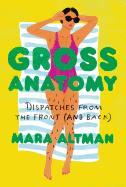
| Publisher: | Putnam | |
| Genre: | Form, Medical, Physiology, Social Science, Humor, Essays | |
| ISBN: | 9780399574832 | |
| Pub Date: | August 2018 | |
| Price: | $27 |
| Humor |
by Mara Altman
Gross Anatomy: Dispatches from the Front (and Back) by Mara Altman is an uproariously entertaining collection of essays packed with thoroughly original musings on the female body. Chin hair, bosoms, bellybuttons, hemorrhoids: she leaves no stone unturned in her quest to demystify the workings of the female anatomy.
Altman (Thanks for Coming) has amassed an impressive volume of medical research and anecdotal asides on bodily functions by interviewing a veritable army of experts, including a neuroscientist, an evolutionary biologist, an anatomy professor, a chemist, a gynecologist and a "pelvic practitioner." Friends, relatives and her endlessly patient husband, Dave, are also consulted. She breaks down the medical research into easily digestible bites and has an uncanny way of reaching one's deepest fears of physical and functional imperfections and dragging them out into the open to share. By exposing universal anatomical insecurities, Altman reduces their power, proving that we are meant to be exactly as we are, warts and all.
This body-positive manifesto is a perfect read for any woman who has ever wondered if she was the only one with copious sweat glands, hair in all the wrong places and female odors that are oddly attractive to dogs. With absolutely no inhibitions, Altman is leading the way for more honest conversations about the glorious imperfections of the female anatomy, a truly welcome change from the insecurity-breeding images of perfect bodies that surround us on social media. --Shahina Piyarali, writer and reviewer

| Publisher: | Liveright | |
| Genre: | American, Literary Criticism, General, Poetry | |
| ISBN: | 9780871406538 | |
| Pub Date: | July 2018 | |
| Price: | $26.95 |
| Poetry |
by E.E. Cummings
E.E. Cummings, one of the brainiest poets of the 20th century, runs wild across genres in A Miscellany, a collection of essays, sketches, epigrams, speeches from unfinished plays and other fun endeavors.
Originally published in 1958, the collection was later updated by Cummings's long-time editor, George J. Firmage, and is presented here in a handsome new edition. The collection presents a side of Cummings not widely known, including several over-the-top, laugh-out-loud-funny articles the poet wrote for Vanity Fair in the 1920s, which satirize New York high society and intellectual circles. There's also his translation of Louis Aragon's political poem "The Red Front." Further adding to the pleasant melange are chapters from an untitled experimental novel, which Cummings jests about as unmarketable in his own introduction.
He is at his zany best in his articles of art criticism in which he espouses, and wittily demonstrates, his modernist aesthetic. In his essay on sculptor Gaston Lachaise, Cummings strangely yet effectively describes the elusive life-force of good art as "the actual crisp organic squirm--the IS." In his essay "The Agony of the Artist (with a Capital A)," he steers readers away from notions of artistic success and toward art as a way of living: "to become alive, or one's self, means everything." His line drawings scattered throughout the collection are surprisingly vivid, including one of Abraham Lincoln on his deathbed with surreally elongated arms and fingers. A defender of cubism and modernist art in general, Cummings's own style reinforces his polemics.
A Miscellany is a treat for fans of Cummings's poetry and also a fascinating contribution to literary history. --Scott Neuffer, writer, poet, editor of trampset
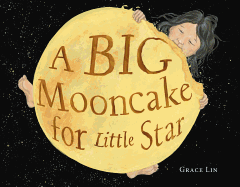
| Publisher: | Little, Brown | |
| Genre: | Cooking & Food, People & Places, United States - Asian American, General, Bedtime & Dreams, Nature & the Natural World, Juvenile Fiction | |
| ISBN: | 9780316404488 | |
| Pub Date: | August 2018 | |
| Price: | $17.99 |
| Starred | Children's & Young Adult |
by Grace Lin
Little Star and her Mama are such good bakers that Mama must remind Little Star once more to curb her appetite: "Can you remember not to touch this Big Mooncake until I tell you to?" Little Star's immediate agreement lasts through teeth brushing, face washing and snuggling in bed with book and bunny. She even manages to fall asleep--but she can't stay asleep and soon enough, she "Pat pat pat"s her way to her first tiny nibble. Once begun, resistance is futile, and Little Star returns night after night for one more little nibble. The mooncake wanes--what will Mama say when she discovers nothing left but "a trail of twinkling crumbs"?
A Big Mooncake for Little Star is Newbery Honor and National Book Award finalist Grace Lin's first picture book since Thanking the Moon (2010). Since then, she's become the mother of a little girl who, like Little Star, loves mooncakes and moon tales, as revealed in Lin's back-flap author's note. With each gorgeous spread set against the night sky, mother and daughter, garbed in matching golden-starred pajamas, cook, negotiate and enjoy each other. Lin adds touches of her Chinese heritage and her literary legacy to her celestial kitchen: a bamboo steamer, Chinese ingredients, Little Star's moon rabbit; a mommy/baby bear scene on a blueberry-colored shelf in a nod to Robert McCloskey's classic Blueberries for Sal and to the cover of The Seven Chinese Sisters, which Lin illustrated. While noting her original story "doesn't have any roots in Chinese mythology," Lin nevertheless "imbues it with all the traits [she] associate[s] with the Moon Festival--quiet joy, love, and beauty," and creates a perfectly irresistible treat for parents and children of all ages. --Terry Hong, Smithsonian BookDragon
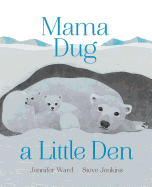
| Publisher: | Beach Lane/S&S | |
| Genre: | Animals, Zoology, General, Science & Nature, Juvenile Nonfiction | |
| ISBN: | 9781481480376 | |
| Pub Date: | August 2018 | |
| Price: | $17.99 |
| Children's & Young Adult |
by Jennifer Ward, illust. by Steve Jenkins
Platypuses, Gila monsters, bobcats and polar bears are some of the 14 families of animals featured in author-illustrator team Jennifer Ward and Steve Jenkins's Mama Dug a Little Den (Mama Built a Little Nest). Using stunning collage, lively four-line poems and paragraphs that provide greater depth, Ward and Jenkins describe how animal parents (most often the mothers, as explained in the author's note) dig or find "holes, dens, and burrows" to ensure survival.
All of the poems are in large print, most beginning with the same words as the title, and all using the same easy-to-read-aloud meter and rhyme scheme, reminiscent of "Mary Had a Little Lamb." Further information is included in smaller text on the same spread. For example, the large-type poem on the Gila monster double page spread reads: "Mama dug a little den/ to hide out from the sun--/ since baking in the desert/ isn't fun for anyone!" The mottled red-and-blue reptile with a big forked tongue is pictured popping out of its sandy burrow, shaded by a cactus with sharp thorns. The smaller print explains that, while many of the animals spend short periods of time in their dens, the Gila monster always stays in a burrow, coming out only when the Sonoran Desert temperature cools a bit. Jenkins's visually exciting collages use painted and textured papers, and each spread features different perspectives, some depicting just the parent animal, others including several animals, such as the polar bear mama and her two cubs, cozily inhabiting their den, "a cave of sparkling snow."
Mama Dug a Little Den has exactly the right amount of text for the read-aloud audience as well as interesting details and an author's note that will encourage older kids to do more research and direct observation. --Melinda Greenblatt, freelance book reviewer
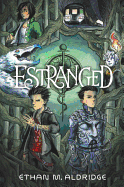
| Publisher: | HarperCollins | |
| Genre: | Fantasy, Juvenile Fiction, Comics & Graphic Novels, Action & Adventure | |
| ISBN: | 9780062653864 | |
| Pub Date: | August 2018 | |
| Price: | $12.99 |
| Children's & Young Adult |
by Ethan M. Aldridge
"Isn't it a bit young to be a knight?" a fairy party-goer asks of the fay king. "Nonsense!" the king replies, all bravado. "It's a human childe, they're made of stern stuff, and ours is a particularly good one."
The fay king and queen took Childe from his human family when he was only a baby, leaving their own child in his place. Never even given a proper name, Childe is sick of his royal "parents" treating him like a pet, cooing over his every "precious" sneeze and exclaiming about how "squishy" he is. Also, with only the court staff and a boy-sized candle gollum as company, Childe is lonely and feels out of place. Edmund, the fay baby who was swapped for Childe, feels equally alone--he knows he's a changeling but tries to hide his magic (not always successfully) for fear of upsetting his adopted human family. When the fay king and queen are turned into rats by a usurper named Hawthorne, Childe is forced to flee. He escapes to the home of the only person he believes can save both him and the fay kingdom: Edmund, "the rightful" (and only) "blood heir to the World Below."
In debut author Aldridge's graphic novel fantasy, Childe and his gollum, Whick, travel with Edmund and his human sister, Alexis, to the Below to take back the kingdom from the evil Hawthorne. Aldridge makes striking use of his medium, varying panel size and full-page spreads to match and heighten the action and suspense. Estranged's swiftly moving text and detailed, energetic illustrations contain any and every fantasy motif or creature a reader could want. --Siân Gaetano, children's and YA editor, Shelf Awareness